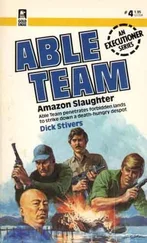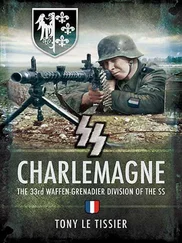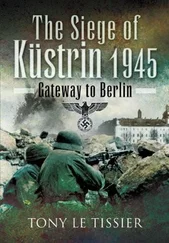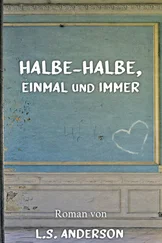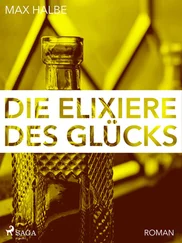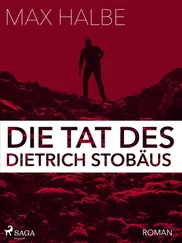SS-Lieutenant Bärmann described the composition of this column:
Without orders, we formed up in a new column west of Halbe: two Königstigers, three Panthers, two Hetzers, several APCs, a self-propelled 20mm Flak, and vehicles of all kinds. In addition, infantry, most of whom had no weapons. [31] Ibid .
After they had waited all the previous day, the orders for 32nd SS Tank-Hunting Battalion to move did not arrive until the evening of the 28th. Ernst-Christian Gädtke explained what followed:
Once more we cut down on what we would carry, once more we had some hot food and were then issued with cold rations. Finally, in the evening as dusk fell, we moved off to the south-west towards the village of Halbe. The Russian lines followed the Lübben–Gross Köris railway line and we were to breach them at Halbe.
It was dark by the time we reached Halbe, the fighting vehicles following close behind each other along the woodland tracks, those who could sitting aboard, and those on foot keeping close on either side of the track. Everyone was trying to keep as close as possible to the vehicles.
From up in front, from Halbe, came the sounds of battle: infantry fire, the barking of anti-tank guns, the hammering of machine guns. Slowly, with interruptions and delays, the advance continued. Firing was going on in all directions and from all directions, and no one knew who was firing, who was friend and who was foe, who was firing at whom. In Halbe, barns and the roofs of houses were burning. We rolled on through the village, firing on both sides. Dead were lying in the street and between the houses, Russians and Germans all mixed up together. Shots, hits, explosions. Nobody was taking care of those lying there. Somehow we got through. [32] Gädtke, Von der Oder zur Elbe , p. 34.
We have another descriptive account from Eberhard Baumgart, originally of the Security Company of 32nd SS Division and now with a combat team guarding the headquarters staff:
Late in the afternoon we found ourselves in the wood north-east of Märkisch Buchholz again. Soldiers were camping everywhere and standing around vehicles, including quite a lot of trucks, staff cars and command vehicles. The most senior bigwigs collected around them with their red stripes and gold on their collar patches and caps. These gentlemen were studying maps and conferring, while NCOs were searching among the pines for members of Waffen-SS units. We were really glad not to have been forgotten. The 30. Januar Security Company had come together again and was apparently complete.
Night descended and movement was discernible in the wood around us, but we were not allowed to ride on the tanks. We waited in hope, but had to return to the ranks. The places on the tanks were to be taken by the gentlemen of the staff. Some moonlight came through the pines revealing sandy tracks. The tanks rolled past us and apparently took another direction. The sound of their motors faded away.
We crossed a road and I read ‘Märkisch Buchholz’ and ‘Halbe’ ahead on a signpost. The wood on either side of the road was swarming with soldiers. In front of us Russian artillery fire was coming from the direction of Halbe. The enemy fire increased and shells of all calibres burst among the treetops, breaking tree trunks and ripping holes in them as splinters whistled through the air and branches showered down. That was quite some bombardment. We were expected. I jumped from cover to cover and dived behind pine trees with only one thought: ‘not me!’ In the bright flashes of the explosions I saw some silhouettes flitting about, but only a few. I came through all right myself and saw to left and right of me motionless, waiting soldiers. I wanted to get them to move along with us, but they wouldn’t move. They remained lying there under fire, waiting for others to open the way for them.
We came across some despondent wounded men and some dead ones. I reached the roadway just short of the village. The artillery fire was going over us, so now the mortars took us on as their target. Ducking down, we hastened towards the station, having to avoid or jump over corpses. On the left-hand side was a railwaymen’s hut. It had really been hailing down hard here! I had seldom seen such a mass of dead in a small area in all the war, and then only on the Russian side, but these were Germans. The wood was now getting less dense and I could see the hut more clearly. Men were pressed tightly together along its length like a swarm of bees to a post. What we saw there looking like frozen grains of salt turned out to be totally terrified soldiers. They thought that they were in dead ground, safe from enemy fire, but what a mistake that was. They just turned round when shouted at. This was only a few metres from the railway level crossing barriers, which stuck up into the grey skies. On the crossing was a carpet of corpses, grey-green corpses. I could see only German soldiers. I had to get away from here. But where to? I could see nothing but corpses, corpses in front of us, on and beyond the crossing. And whoever hesitated here would soon be lying among them.
At first I tried to avoid the dead, for there were some wounded among them, but the dead were lying on top of each other in the middle of the crossing, and one couldn’t make out where one was treading. I had to grit my teeth and get on. The storage sheds near the station were beginning to burn and I could read ‘Halbe’ on the station sign. I will never be able to forget this place. I had to get away. We hastened along the street, which opened out in the grey of the pinewood only a few metres away [the road to Teurow and Freidorf]. There was some cover in the roadside ditches and many soldiers gathered here. Some vehicles also appeared, driving in both directions. Confusion and uncertainty clearly reigned here. [33] Wilke, Am Rande der Strassen , pp. 58–9.
Second Lieutenant Kurt Schwarz, of the 1st Battalion of Panzer Regiment Brandenburg , came through Halbe that evening in a group of four Panthers. They turned south towards Teurow and then west again for the autobahn:
Suddenly I was whirled round in the turret by a hard blow, a hit by a mortar bomb. The gunner and loader bandaged me up in the turret. Shortly afterwards we were hit in the side of the engine space and our Panther burst into flames. I screamed: ‘Out!’ We found cover together in a hollow close to the burning tank. Suddenly there was a big explosion and the pressure blew the turret off the turret ring. We pressed ourselves down in the hollow, and the seven-metre long gun barrel hit the ground right in front of us. [34] Helmut Jurisch in corresondence with the author.
Second Lieutenant Ernst Habermann of the same unit was leading a group of tanks in his APC and witnessed the destruction of two of the German tanks as they approached the autobahn:
A ferocious fight broke out here. Lieutenant Petersen’s tank was shot up and he was killed. Our APC was rammed by a Königstiger when it reversed while engaged by an anti-tank gun, and we had to continue on foot behind our tanks. I was about to get on to a passing tank when it was hit and I was wounded in the thigh. After a second hit, only the wounded driver and the radio operator bailed out. We lay down under the shot-up Panther and were tending our wounds, when it suddenly burst into flames, and we had to move away. Near the autobahn we found six dead soldiers who had been shot in the back of the neck. [35] Ibid .
Günter Führling and Heiner Lüdermann, two officer cadets with orders to report to their parent 303rd Infantry Division still in their pockets, decided to leave the rearguard on the banks of the Dahme and make their own break-out to the west that evening. After passing endless, jammed, stationary columns of transport through Märkisch Buchholz and the woods leading to Halbe they came to the town. Führling depicted the scene in Halbe:
Читать дальше

